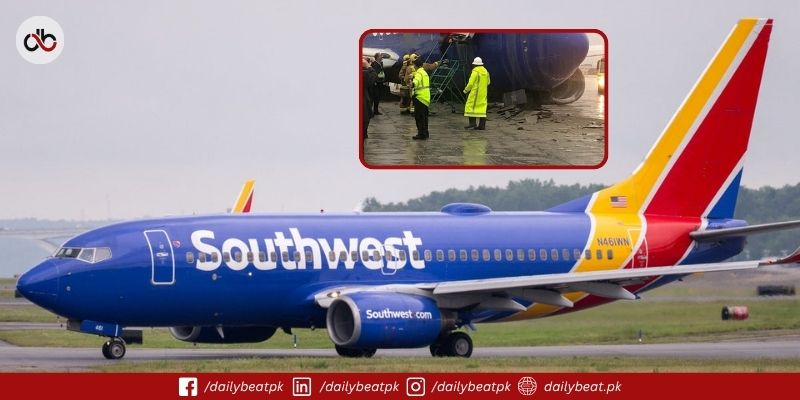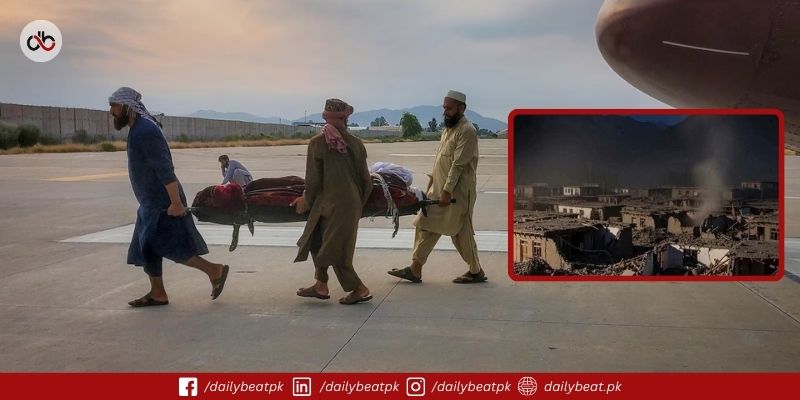The Southwest flight Burbank collision has become a serious wake-up call for U.S. air safety. On a routine flight from Hollywood Burbank Airport to Las Vegas, Southwest flight 1496 made headlines when it dropped rapidly midair to avoid a near collision with another aircraft.
The incident left two flight attendants injured and terrified passengers gripping their seats. This wasn’t just a bump in the sky, it was a narrowly avoided disaster.
Flight 1496: Sudden Drop Shocks Everyone on Board
Shortly after takeoff, Southwest flight 1496 avoided a midair collision near Burbank, plummeting in elevation just minutes into the journey. The crew acted fast. According to Southwest Airlines, their aircraft responded to onboard traffic alerts, forcing them to climb and descend rapidly.
Witnesses onboard described the moment as terrifying. Some passengers reported being lifted out of their seats during the sudden drop. The event was so violent that two flight attendants were injured in the process.
One passenger, comedian Jimmy Dore, shared on social media:
“The pilot said his collision warning went off & he needed to avoid a plane coming at us. Wow.”
Real Voices: What Passengers Experienced
Passenger Caitlin Burdi told Fox News that people onboard were “screaming.” She recalled the pilot explaining later that they had almost collided with another aircraft and temporarily lost contact with air traffic control.
“We really thought we were plummeting to a plane crash,” Burdi shared.
Her account gives a chilling insight into just how close this flight came to becoming a tragedy.
What Aircraft Nearly Hit Flight 1496?
According to CNN, the Southwest flight was nearly intercepted by a privately owned Hawker Hunter fighter jet. The jet passed within a few hundred feet of Southwest flight 1496’s altitude, just six minutes into the flight.
This jet had taken off from El Paso, Texas, en route to Oxnard, California. It reportedly crossed less than two miles in front of the commercial plane, a dangerously small margin in aviation.
Airline and FAA Response: What Happens Next?
Southwest Airlines confirmed that Southwest flight made a sudden drop to avoid a collision near Burbank, and stated that the aircraft landed safely in Las Vegas. Their official statement noted:
“We appreciate the professionalism of our Flight Crew and Flight Attendants in responding to this event.”
The Federal Aviation Administration (FAA) has launched a full investigation. They stated,
“Ensuring the safety of everyone in the national airspace system remains our top priority.”
This Southwest flight crash scare has sparked serious discussions around U.S. air traffic control systems, pilot training, and private aircraft protocols.
Not the First Time: Pattern of Near Misses
What’s even more concerning is that this Southwest flight Burbank collision comes just days after another near-disaster. A Delta regional flight had to make a sudden evasive move to avoid a U.S. military bomber over Minneapolis.
These back-to-back incidents point to a growing pattern of airspace congestion and safety system failures. Experts are calling for stricter regulations, improved tracking, and stronger communication between aircraft and air traffic control towers.
Flight Status and Safety Reactions
For travelers wondering about Southwest flight status after the incident, Flight 1496 continued to operate normally in the following days. However, passenger trust has been shaken, and conversations around transparency and airline safety are heating up.
Southwest Airlines has reiterated that “Nothing is more important than the safety of our customers and employees.”
But the public wants answers:
- How did a private jet come so close to a commercial aircraft?
- Why was there a loss of communication with air traffic control?
- What systems failed, and how can they be improved?
Our Analysis: What This Means for U.S. Air Safety
The Southwest flight Burbank collision isn’t just a one-off scare, it exposes real issues in the national aviation system.
- Private aircraft oversight is weak. Jets like the Hawker Hunter fly under different rules, yet share airspace with crowded commercial routes.
- Air traffic control systems are under strain. Losing contact with a commercial plane, even for a few seconds, can be catastrophic.
- Passenger safety responses must evolve. Emergency drops, though rare, are becoming more common. Airlines should train both crew and passengers on what to expect in such moments.
What Can Be Done to Prevent Another Incident?
To prevent another Southwest flight crash scare, experts recommend:
- Advanced collision-avoidance technology for all aircraft, including private jets.
- Stricter flight path regulations for smaller, privately owned aircraft.
- Improved communication infrastructure for both commercial and private pilots.
- Mandatory real-time tracking of all flights in congested corridors like the Los Angeles area.
Final Thoughts
The Southwest flight Burbank collision could have ended in disaster, but it didn’t. Thanks to the quick action by the flight crew, tragedy was avoided. Still, the event raises urgent questions about aviation safety, regulatory oversight, and system resilience.
As FAA investigations continue and pressure mounts on regulators and airlines alike, this incident stands as a reminder: safety in the skies is never guaranteed, and constant vigilance is non-negotiable.
For more on recent global conflicts, read about the Russian missile attack on Kyiv that left 2 dead and 16 injured overnight.















